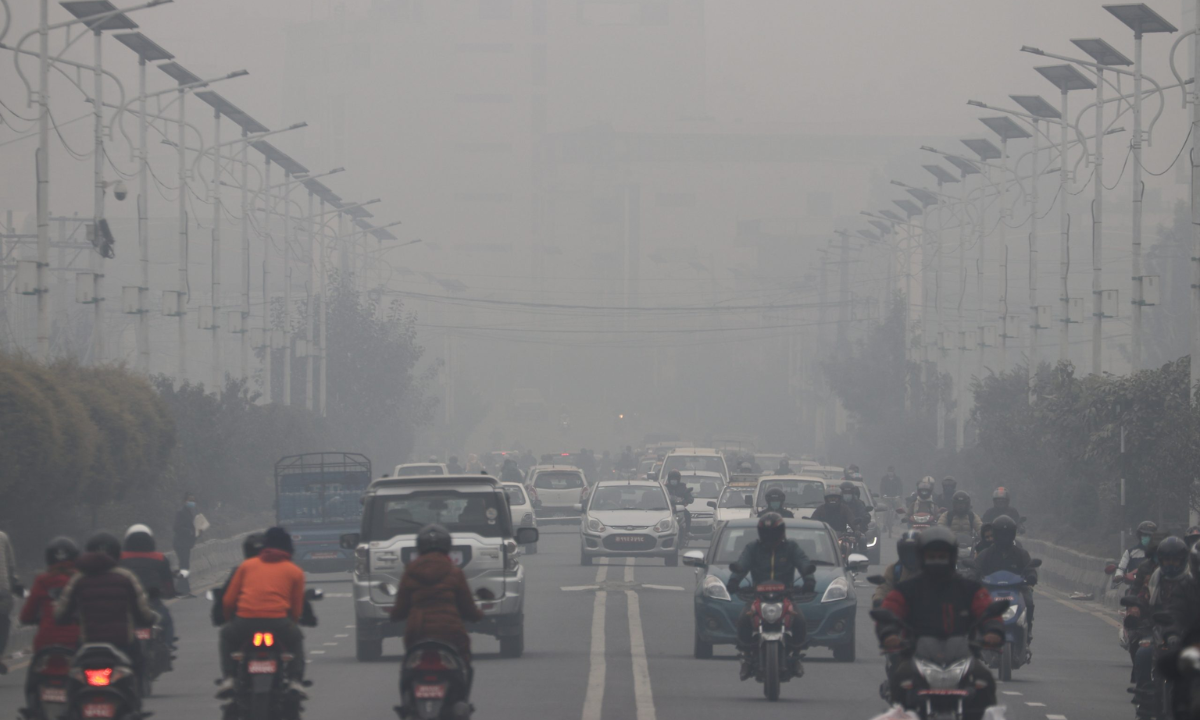KATHMANDU- Discover the current air quality situation in Kathmandu, Nepal’s capital, and delve into the causes, types of pollutants, seasonal trends, and potential health impacts associated with air pollution. Learn how addressing key pollution sources could lead to significant improvements in air quality over time.
The air quality in Kathmandu, Nepal’s bustling capital, has raised alarms as PM2.5 levels soared to 184 micrograms per cubic meter (μg/m3) as of 7:45 am today, according to data provided by IQ AirVisual. This concerning level marks Kathmandu as the second most polluted city globally, trailing only behind Chiang Mai in Thailand.
Understanding the Causes:
Kathmandu’s pollution woes stem from a myriad of factors, both natural and man-made. Nestled within a valley and encircled by towering mountains, Kathmandu faces challenges with air circulation, leading to stagnant air conditions. Furthermore, outdated vehicles equipped with obsolete motors and diesel engines contribute significantly to pollutant emissions. Inadequate waste management practices also lead to open burning of organic materials, further deteriorating air quality. Earthquakes, construction activities, and geographical features compound the issue by trapping pollutants within the valley.
Types of Pollutants:
The primary pollutants plaguing Kathmandu comprise fine particulate matter, including black carbon, emitted from incomplete combustion of fossil fuels and biomass. Diesel-fueled vehicles are a major contributor to black carbon emissions, along with other pollutants such as carbon monoxide, nitrogen dioxide, ozone, and sulfur dioxide.
Seasonal Trends:
Analyzing data from 2019 reveals a pattern in Kathmandu’s air quality, with the cleanest air observed in August and the highest pollution levels recorded in January. This trend underscores the seasonal variations in air quality, with six months of the year experiencing unhealthy levels of pollution.
Air Quality Trends:
While there have been slight improvements in air quality from 2018 to 2019, the overall trend shows a decline since 2017. Fluctuations in pollution levels make it challenging to ascertain whether Kathmandu’s air quality is steadily improving or experiencing intermittent changes.
Health Impacts:
Air pollution poses grave health risks, contributing to millions of premature deaths annually worldwide. Respiratory infections, lung cancer, stroke, coronary heart disease, and chronic obstructive pulmonary disease are among the health issues associated with prolonged exposure to polluted air. Vulnerable populations, including the elderly, children, pregnant women, outdoor workers, and individuals with pre-existing health conditions, face heightened risks.
Addressing the Issue:
As Kathmandu grapples with environmental challenges amid rapid urbanization and economic growth, addressing key sources of pollution such as outdated vehicles and open burning is crucial. Implementing sustainable waste management practices and investing in cleaner technologies can pave the way for long-term improvements in air quality, safeguarding public health and well-being.





